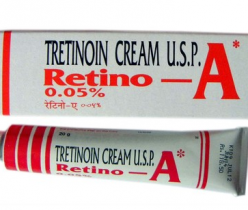It’s impossible to take proper care of your skin if you don’t even know what you are dealing with. Read this informative article to know the different types of skin and how to find your skin type.
How to know your skin type?
In order to get a beautiful skin and make a right decision about beauty products and an appropriate skin care or treatment suitable for the needs of your skin, it’s immensely important to know your skin type. Your genes decide the quality or type of your skin which means that you are born with your skin type. However, as you age, the health and beauty of your skin chiefly depends on your diet and how you take care of yourself.
The different types of skins are normal, oily, dry, sensitive and combination skin. It’s very important to know your true skin type as caring for the wrong skin type and following the wrong care regimen and products can worsen your skin.
To find out your skin type, perform a simple test. Wipe your face with a clean facial tissue or paper in the morning, immediately after you wake up:
Also Read: Perfect Health is Perfect You
Normal skin type
If your skin type is normal, there will be no trace of sebum or oil on the tissue paper. Your skin appears to be clean and vibrant and feels elastic and supple on touching.
A normal skin is neither too dry nor too oily. A normal skin is either free or has few imperfections, scarcely visible pores, radiant complexion and is not much sensitive. It has a good blood circulation and is the least problematic among all the types of skins. A normal skin has a healthy complexion and doesn’t demand much care.
Oily skin
If the type of skin you have is oily, the tissue will reveal spots of facial oil on it, parallel to the areas of your forehead, nose and cheeks. An oily skin appears to be thick, coarse, greasy and shiny due to the presence of overreactive sebaceous glands that produce more oil than required. Oily skin is problematic as it has enlarged pores and tends to cause acne and other outbreaks. Various conditions responsible for an oily skin include enlarged pores, diet, hereditary pores, hormone levels, unsuitable cosmetics and stress, pregnancy, acne and flare ups.
An oily skin requires high maintenance through thorough cleaning of the skin regularly with gentle, soap-free cleansers. Avoiding rich creams and foods containing carbohydrates can be helpful in improving the quality if this type of skin. However, a good trait that comes in with an oily skin is that it stays safe from aging and wrinkling for a long time.
Dry skin
If you possess a dry skin, the paper will come out to be clean after wiping. A dry skin feels dry, tight and flaky after wiping. It has low sebum level and is poor at maintaining oil and can easily develop wrinkles, a sallow tone, and fine pores, and it is very prone to aging and irritation.
Dry skin might still look great on a young person, but, you should keep it healthy and clean by applying a rich protective moisturizer that suits this skin type and is in accordance with the changing weather.
Combination skin
If you’re having a combination of dry and oily skin, the paper will be blotted with traces of oil in the areas corresponding to your nose and forehead and will be clean in the areas that made contact with your cheeks.
A combination skin type holds oil around the T-zone which comprises of the nose and the forehead but cheeks, areas around the eyes and, mouth remain oil free. Thus, different facial areas require different types of care. Dry zones should be treated with rich creams and moisturizers, while oily areas will benefit from frequent and thorough cleaning.
Also Read: Top 10 Home Remedies For Damaged Hair
Sensitive skin
Sensitive skin characterized with a skin which is tends to feel light, becomes irritated and inflamed easily and, is usually very dry. It quickly develops hives (rash), reddish and scaly areas, can become itchy and tingly and, is prone to breakouts.
This type of skin is the most problematic one and needs to be taken care of very carefully. It is thus, essential to pick the right skin care products including cleansers and moisturizers and, treatments for sensitive skin.
Conclusion
‘How to know your skin type’ is no more a question for you. This article is a helpful guide which enables you to know your skin type so that you can give the right care to your skin. Find out your skin type from the different types of skin and start making the right choices!





